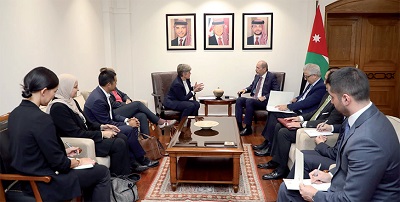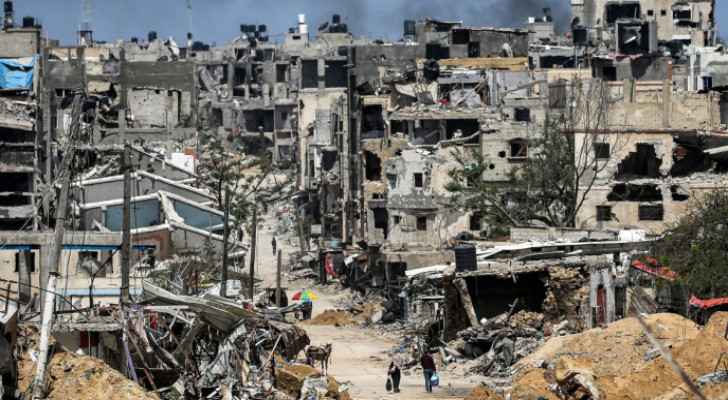Hana Namrouqa, The Jordan Times
AMMAN — The Ministry of Environment is embarking on a study to identify the sources of pollution at the Zaatari Refugee Camp, which sits on one of Jordan’s main aquifers, according to government officials.
Minister of Environment Taher Shakhshir said the ministry is currently contacting international agencies to assist the Kingdom in addressing environment pollution in the area of the Zaatari camp.
“We call on international aid agencies to assist Jordan financially and technically in assessing the environmental impact of hosting thousands of refugees at the Zaatari camp,” Shakhshir said in a statement e-mailed to The Jordan Times on Thursday.
He noted that the ministry is compiling a “detailed report” on the environmental conditions at the 120,000-strong Zaatari Refugee Camp in Mafraq Governorate, some 80km northeast of Amman.
The ministry’s spokesperson, Isa Shboul, told The Jordan Times on Thursday that the report will also identify the sources of pollutants in the area of the camp and propose measures to prevent pollution of the environment in Zaatari and adjacent areas.
A recent study by the Ministry of Water and Irrigation warned that it was only a matter of time before the main aquifer lying beneath the Zaatari camp became polluted.
Overpumping to meet the demand of hundreds of thousands of Syrian refugees is not the only risk facing the aquifer, according to the study, which noted that pollution due to wastewater leakage is also expected within one to ten years.
More than 580,000 Syrians have taken refuge in the Kingdom since the conflict in their country erupted in March 2011. Over 70 per cent of Syrian refugees in Jordan live amongst host communities, while the rest are accommodated at the Zaatari camp and the Mreijeb Al Fhoud Camp in Zarqa Governorate.
The influx of refugees is placing pressure on the local sewage network, causing it to overflow frequently, according to officials and residents of Mafraq.
The study indicated that over 34.164 million cubic metres of wastewater are generated annually by Syrian refugees in Jordan.
The ministry and the Public Security Department are currently monitoring trucks transferring wastewater from the camps to Ikeider Landfill, after some were discovered dumping sewage in nearby valleys.
In addition, the Ministry of Water and Irrigation will soon install portable wastewater treatment units at the Zaatari and Mreijeb Al Fhoud camps to prevent sewage from leaking into underground water.
Latest News
 King orders holding parliamentary elections in accordance with law, checks on electoral commission’s preparations
King orders holding parliamentary elections in accordance with law, checks on electoral commission’s preparations- N. Macedonia starts elections that could decide stalled EU talks
 US Senate passes bill for aid to Israeli Occupation, Ukraine, Taiwan
US Senate passes bill for aid to Israeli Occupation, Ukraine, Taiwan Safadi discusses support to Syrian refugee with DRC
Safadi discusses support to Syrian refugee with DRC Israeli Occupation aggression on Gaza enters 200th day
Israeli Occupation aggression on Gaza enters 200th day
Most Read Articles
- US president signs bill to provide new aid for Ukraine
- Prime minister directs government to support IEC ahead of upcoming elections
- Palestinian prime minister, Jordanian ambassador discuss humanitarian efforts in Palestine
- Iran cuts Syria presence after strikes blamed on Israel —monitor
- US Supreme Court seems split on Idaho abortion ban
- UAE announces $544m for repairs after record rains
- Germany nudges up growth forecast, ailing economy at 'turning point'
- Four dead as floods wreak havoc in Kenyan capital
- Vaccines saved at least 154 million lives in 50 years — WHO
- Israel pummels Gaza after US Congress approves military aid